On June 10…
“The wrongs which we seek to condemn and punish have been so calculated, so malignant, and so devastating, that civilization cannot tolerate their being ignored, because it cannot survive their being repeated.”
~Supreme Court Justice Robert H. Jackson
Chief American Prosecutor at Nuremberg
“In keeping silent about evil, in burying it so deep within us that no sign of it appears on the surface, we are implanting it, and it will rise up a thousand fold in the future. When we neither punish nor reproach evildoers, we are not simply protecting their trivial old age, we are thereby ripping the foundations of justice from beneath new generations.”
~Aleksandr Solzhenitsyn
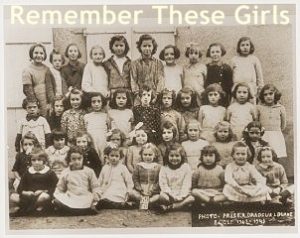
The events from this date in history rank among the cruelest examples of what human beings can do to each other. I am advising you NOW that some of what you are about to read is very disturbing.
But to ignore it would be wrong. I can’t pretend it never happened. As Solzhenitsyn said, “keeping silent about evil” would be an injustice to the thousands who suffered on this date, and yes, the millions more who suffered during the entire Nazi era.
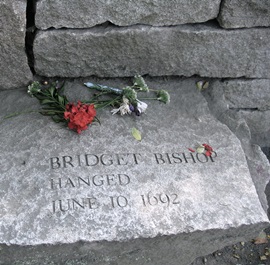
1692 – Bridget Bishop, the first colonist to be tried in the Salem witch trials, was hanged after being found guilty of the practice of witchcraft.
Bishop, accused of witchcraft by more individuals than any other defendant, was known for her “dubious” moral character, which included frequenting a tavern, dressing flamboyantly (by Puritan standards), and being married three times.
She professed her innocence (“I am no witch. I am innocent. I know nothing of it.“), but was found guilty of “certaine Detestable Arts called Witchcraft & Sorceries.”

1775 – At Independence Hall in Philadelphia, John Adams proposed to Congress that the men fighting in Boston should be part of a Continental Army led by a general.
The men who had armed themselves and rushed to surround British forces in Boston following the Battle of Lexington and Concord were overwhelmingly from New England, but Adams realized that the military effort would only succeed if the British thought the colonies were united.
To this end, Adams suggested the appointment of a Virginian, George Washington, to command the Continental forces. Adams believed that only Washington, with his talent and character, would unite the colonies better than anyone else.

1805 – The First Barbary War between the North African state of Tripoli and the United States came to an end with the official signing of the Treaty of Peace and Amity.
Pirates from the Barbary States (Tripoli, Algiers, Tunis, and the Sultanate of Morocco) had seized American merchant ships and held the crews for ransom, demanding the U.S. pay $225,000 to the Barbary rulers.
United States President Thomas Jefferson refused to pay.
Consequently, on May 10, 1801, Tripoli declared war on the U.S., not through any formal written documents but in the customary Barbary manner of cutting down the flagstaff in front of the U.S. Consulate.
When Tripoli’s fleet captured the USS Philadelphia in 1803, a small detachment of U.S. Marines stormed the ship and overpowered the Tripolitan sailors before setting fire to the Philadelphia, denying her use by the enemy.
Marine Corps 1st Lieutenant Presley O’Bannon later led a force of eight U.S. Marines and five hundred mercenaries to capture the Tripolitan city of Derna. This was the first time the United States flag was raised in victory on foreign soil.
The action is memorialized in a line of the Marines’ Hymn – “the shores of Tripoli”.
Finally, on this date, Tripoli agreed to return three hundred American prisoners in exchange for one hundred Tripolinos held prisoner and $60,000.
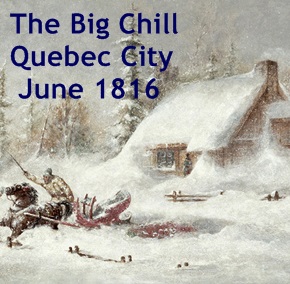
1816 – Snow began falling in the St. Lawrence Valley. Over the next six days, 12 inches of snow was on the ground in Quebec City.
Ice “as thick as a dollar” killed vegetation. Trees shed their leaves. Newborn spring sheep and calves died from the cold. Flocks of migratory birds “dropped down dead in the streets.”
The snowfall was caused by global cooling from the April 10, 1815 explosion of Mount Tambora, an Indonesian volcano, which threw about 25 cubic miles of rock and dust into the stratosphere.
1816 would become known as the year without a summer in North America and Europe, with snow and frost in June, and widespread crop failures.
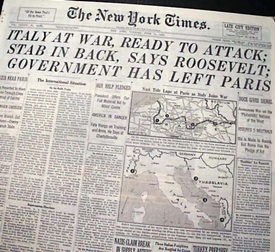
1940 – As the French government fled to Bordeaux during the German invasion, Italian Prime Minister Benito Mussolini, feeling the European conflict would soon end without Italy’s participation, declared war on Britain and France.
As he said to the Army’s Chief-of-Staff, Marshal Badoglio, “I only need a few thousand dead so that I can sit at the peace conference as a man who has fought.”
U.S. President Franklin Roosevelt was outraged. Speaking at a commencement ceremony at the University of Virginia, Roosevelt, who thought he had assurances from the Italian government that they would refrain from entering the war, said, “On this tenth day of June, nineteen hundred and forty, the hand that held the dagger has struck it into the back of its neighbor.”

1942 – There is a village named Lidice in the Czech Republic. It overlooks the original village which, on this date, disappeared from the face of the earth on orders from Adolf Hitler and Heinrich Himmler, in reprisal for the ambush and death of SS-Obergruppenführer Reinhard Heydrich in Prague.
173 men over 15 years of age from the village were executed.
71 women were executed and another 113 were deported to Ravensbrück concentration camp.
7 children considered “sufficiently Aryan” were handed over to SS families.
81 other children were sent to the Chelmno extermination camp where they were gassed to death.
Another 11 men who were not in the village were arrested and executed soon afterwards, along with several others already under arrest.
The village – chosen because its residents were suspected of harboring local resistance partisans and were falsely associated with aiding Heydrich’s assassins – was set on fire and the remains of the buildings destroyed with explosives.
A 100-strong German work party was then sent in to remove all visible remains of the village, re-route the stream running through it and the roads in and out. They then covered the entire area the village had occupied with topsoil.
Nothing in the treatment of Lidice derived from any of the Nazi ethnic policies. Lidice was predominately a Roman Catholic peasant village.
The operation at Lidice was simply a reprisal; a stark demonstration of ruthless power. Lidice was intended to serve as an example so the Germans made no attempt to conceal it, as they had with other massacres.

1943 – Heinrich Himmler ordered the final liquidation of the Lodz ghetto in occupied Poland.
Within two weeks, the transfer of 7,000 Jews from the Radegast train station to Chelmno began.
On August 1, 1944 the Warsaw Uprising erupted and the fate of the remaining inhabitants of the Lodz Ghetto was sealed. During the last phase of its existence, some 25,000 inmates were murdered at Chelmno, their bodies burned immediately after death.
As the Allied front approached, German officials decided to deport the remaining Jews to Auschwitz-Birkenau aboard Holocaust trains. 65,000 were gassed.
When the Soviet army entered Lodz on January 19, 1945, only 877 Jews were still alive, 12 of whom were children.
Of the 223,000 Jews in Lodz before the invasion, only a total of 10,000 survived the Holocaust.

1944 – In Distomo, Boeotia, Greece, Waffen-SS troops of the 4th SS Polizei Panzergrenadier Division under the command of SS-Hauptsturmführer Fritz Lautenbach went door to door and massacred Greek civilians as part of “savage reprisals” for a partisan attack upon the unit’s convoy.
A total of 218 men, women and children were killed. SS soldiers bayoneted babies in their cribs, stabbed pregnant women, and beheaded the village priest.
Following the massacre, a Secret Field Police agent accompanying the German forces informed the authorities that, contrary to Lautenbach’s official report, the German troops had come under attack several miles from Distomo and had not been – as Lautenbach claimed – fired upon “with mortars, machine-guns and rifles from the direction of Distomo.”
Lautenbach admitted that he had gone beyond standing orders, but a tribunal found in his favor, holding that he had been motivated, not by negligence or ignorance, but by a sense of responsibility towards his men.
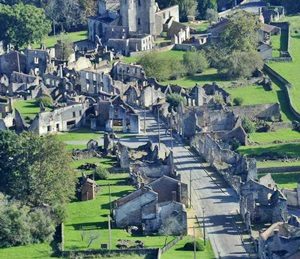
1944 – The village of Oradour-sur-Glane, France was sealed off by a group of soldiers from the Der Führer regiment of the 2nd SS-Panzer Division Das Reich, under the command of Maj. Adolf Diekmann.
They were hell bent on exacting revenge for a purported kidnapping of a Waffen-SS officer by the French Resistance movement.
The women and children were locked in the Catholic Church. The men were divided into groups and led to six barns and sheds.
At the church, troops placed an incendiary device inside. When it was ignited, the women and children who were not overcome by the suffocating black smoke tried to escape through the doors and windows, only to be met with machine-gun fire. 247 women and 205 children died in the brutal attack.
The female students in the photo at the very top of this article all died.
Most of the men inside the barns and sheds were hit by machine gun fire to the lower body and legs. The troops covered them – dead or wounded – with straw and firewood and set the barns on fire. 190 men died.
The soldiers then torched the entire village.
Protests at Diekmann’s unilateral action followed, both from Field Marshal Erwin Rommel and General Walter Gleiniger, German commander in nearby Limoges. Both felt Diekmann had far exceeded his orders.
Sylvester Stadler, commander of the SS Division Das Reich, SS Division Hohenstaufen, ordered a court martial but Diekmann was killed in action on June 29 during the Battle of Normandy.
It was not until 1953 that a trial of twenty-one men took place. Twenty were convicted. Two were sentenced to death and the rest given jail terms.
Amnesties and pardons freed all of those convicted within five years of the trial.
They never rebuilt Oradour. Its ruins (shown above and in the video below) are a memorial. Its martyrdom stands for thousands upon thousands of other martyrdoms in Poland, in Russia, in Burma, in China, in a World at War …
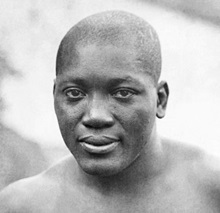
1946 – John Arthur “Jack” Johnson, the first African American world heavyweight boxing champion (1908–1915), died in a car crash near Franklinton, North Carolina after racing angrily from a diner that refused to serve him. He was 68 years old.
Transcending boxing, he became part of the culture and the history of racism in America. His battles against white opponents, in the ring and outside of it, gave rise to “The Great White Hope” play and movie and he came to be lionized as a barrier breaker.
But a criminal conviction from 1913 that most would find abhorrent today – transporting a white woman across state lines – haunted Johnson well after his death and motivated politicians and celebrities for years to advocate for a pardon, however symbolic.
On May 24, 2018, President Donald Trump posthumously pardoned him.
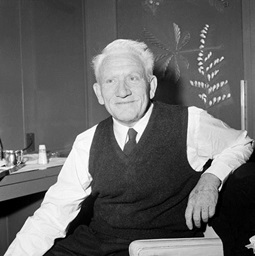
1967 – Actor Spencer Tracy, a nine time nominee for Academy Award for Best Actor (and twice a winner – Captains Courageous and Boys Town), died at the age of 67 from a heart attack. His final film, Guess Who’s Coming to Dinner, was completed just 17 days before his death.
During his career, Tracy appeared in 75 films and developed a reputation among his peers as one of the screen’s greatest actors. Hume Cronyn, who worked with Tracy on The Seventh Cross, admired his co-star’s screen presence: “His method appeared to be as simple as it is difficult to achieve. He appeared to do nothing. He listened, he felt, he said the words without forcing anything.”
Tracy disliked being asked about his technique, or about what advice he would give to others.
“Why do actors think they’re so God damn important? They’re not. Acting is not an important job in the scheme of things. Plumbing is.”

1978 – At the Belmont Stakes, Affirmed defeated Alydar by a nose to become racing’s 11th Triple Crown winner. For Alydar, it was the third straight heartbreaking finish in the Triple Crown series.
With each successive race, Alydar narrowed Affirmed’s margin of victory; Affirmed won by 1.5 lengths in the Kentucky Derby, by a neck in the Preakness and by a nose in the Belmont. Alydar has been described as the best horse in the history of Thoroughbred racing never to have won a championship.
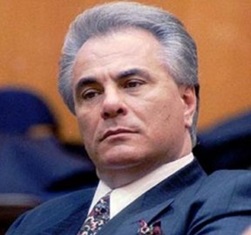
2002 – John Gotti, the former boss of the powerful Gambino crime family in New York City, died of cancer at the United States Medical Center for Federal Prisoners in Springfield, Missouri. He was 61.
At his peak, Gotti was one of the most powerful and dangerous crime bosses in the country. During his era he became widely known for his outspoken personality and flamboyant style, which gained him favor with some of the general public.
While his peers avoided attracting attention, especially from the media, Gotti became known as “The Dapper Don” for his expensive clothes and personality in front of news cameras. He was later given the nickname “The Teflon Don” after three high-profile trials in the 1980s resulted in his acquittal.
After being charged with five murders, conspiracy to commit murder, loansharking, illegal gambling, obstruction of justice, bribery, and tax evasion in 1992, Gotti was finally convicted (on all charges) and was sentenced to life in prison without the possibility of parole.
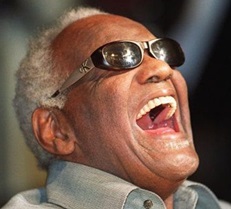
2004 – Music icon Ray Charles died of complications resulting from acute liver disease. He was 73.
During his more than 50 years in show business, Charles – blind from the age of seven – built a career that defied genre, bringing his soulful voice, keyboard prowess and songwriting talent to the pop, country and R&B charts.
Among the first musicians to blend the emotional power of gospel music with secular themes, Charles won 12 Grammys, including a lifetime achievement award in 1987. His songs Hit The Road Jack, What’d I Say and Georgia On My Mind have become American classics.
In 1986, he was inducted into the inaugural class of the Rock and Roll Hall of Fame.
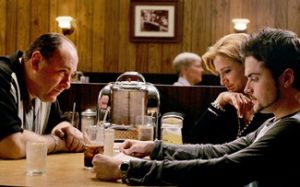
2007 – The 86th and final episode of The Sopranos aired on HBO.
Widely regarded as one of the greatest television series of all time, the fictional drama detailed the life of New Jersey-based, Italian American mobster Tony Soprano.
Despite its often graphic violence – which continued to push the limits of what the viewing public found acceptable – The Sopranos was a major ratings success and won two Peabody Awards. 21 Primetime Emmy Awards, and five Golden Globe Awards.
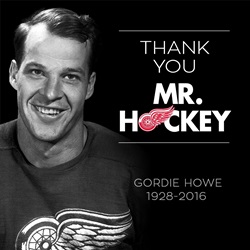
2016 – The incomparable Gordie Howe died at the age of 88.
A 23-time NHL All-Star, “Mr. Hockey” won the Stanley Cup with the Detroit Red Wings four times and won six Hart Trophies as the league’s most valuable player.
Howe finished his NHL career with 1,850 points (801 goals) and was the first player in league history to play 1,500 games. He remains the oldest player to skate in an NHL game (52 years, 11 days).

2023 – Theodore John Kaczynsk, also known as the Unabomber, was found in his cell at FMC Butner, a federal medical center in North Carolina, unresponsive with no pulse after hanging himself with a shoelace from a handicap rail.
Between 1978 and 1995, Kaczynski murdered three people and injured 23 others in a nationwide mail bombing campaign against people he believed to be advancing modern technology and the destruction of the natural environment.
Compiled by Ray Lemire ©2024 RayLemire.com / Streamingoldies.com.